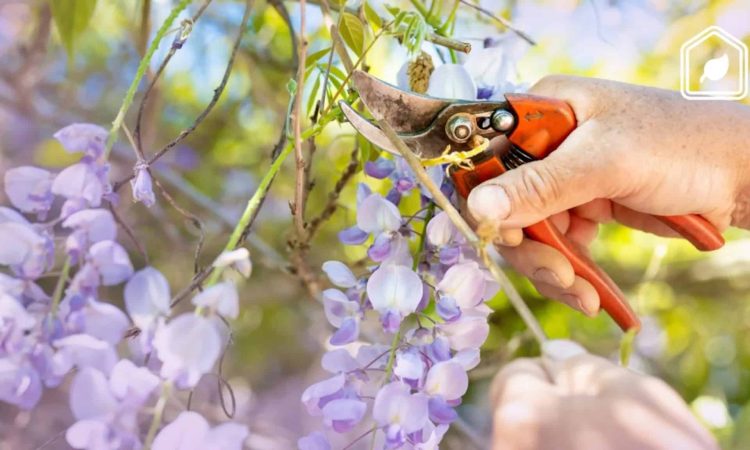
The summer months might be a bit quieter in terms of pruning, but there are still a few things you can do, even in August! You’ll get a better harvest next year if you add more flowers or make your plant a little healthier. We’ll tell you which plants or trees you can prune in August and which ones you’d be better off leaving alone.
Pruning in summer is actually even better than pruning in winter, since the plants are now fully grown and at full strength. As a result, the plants can handle their pruning wounds better and recover faster. In addition, bacteria and fungi have less chance in summer than in winter.
Before you start pruning:
Still, there are some points of interest when it comes to summer pruning. It is advisable never to prune in full sunlight. Not only because this is a lot harder on yourself, but your plants don’t like it either. The moisture released by the pruning wounds evaporates very quickly in bright sunlight, quickly causing brown edges or brown leaves. Does the sun come up suddenly during pruning? Then it is best to give the plant some extra water afterwards. It is also important that your pruning shears are sharp and clean. A sharp shear ensures that the wound heals properly and by keeping your tools clean you prevent the spread of possible diseases.
1. Remove dead flowers = bloom boost
It is always a good idea to remove spent flowers from plants that are still in bloom. This stimulates the plant to keep producing new flowers. This way you can enjoy your flowering plant much longer.
2. Early flowering perennials for a little encore
The perennials that bloomed early this spring, such as Geranium, Women’s Mantle (Alchemilla mollis) and Larkspur (Delphinium), have finished blooming by now. Still, a pruning in August may cause them to bloom again. To a lesser extent, but still a nice encore!
3. Cut away snapped stems and damage
Cut or trim away any snapped stems or damage caused by pests or diseases. You do this by pruning back below the damage to above a healthy stem or bud.
4. Cut off new shoots of fruit trees
The new shoots of fruit trees are softer and more susceptible to diseases and pests. And you don’t want that! So in August, it is better to cut them off. By doing so, you remove the food source and the crown becomes more open and thus accessible to more air and light, allowing the fruit to ripen better.
5. Prune berry, raspberry and blackberry bushes.
Berry, raspberry and blackberry bushes can also be pruned in August or September, but they may still have ripe fruit on them. You can easily prune and harvest at the same time by cutting the branches with ripe fruit down to the base.
It is important that you do not forget to prune in late summer, otherwise the bush will be a big mess next year, which will also affect the harvest. Any branches that have had fruit on them can be pruned back to the ground.
6. Pruning holly and topiary shrubs
Prune back the new growth by cutting off two or three leaves lengthwise.
7. Trimming evergreen shrubs
Not a must, but fine if you want your evergreen shrubs – such as cardinal’s hat, bread tree and snowball – to be neat and not too big. New growth you can shorten to about half.
8. Laurel pruning
August is also the month to prune and shape your bay laurel. This not only makes it look neat again, but also reduces the weight on the trunk. You do this in the same way as for the holly and topiary shrubs described above.
9. Prune holly twice a year
If you do not prune the holly, the bush will grow enormously in width and neglect its shape. It is best to prune the holly twice a year: in spring and in summer, in August for example.
10. Wisteria
Do you want to enjoy full bunches of wisteria next summer? Then it is smart to prune the plant not once, but twice. It is best to do this in January/February and then again in July/August.
DO NOT prune in August
Do not be too enthusiastic with your pruning shears and leave the following plants alone this month. These plants are now preparing themselves to flower in autumn, winter or next spring. It is better to leave the new, vigorous shoots of spring-flowering shrubs alone. These will continue to develop and bloom for years to come. Also, be careful with Sarcococca (fleshberry or sweet boxwood). You may not see it because of the many leaves, but the shrub is now forming flower buds along its stems. So leave those stems alone, or you will miss out on beautiful, long-blooming and fragrant winter flowers next winter. Finally, roses whose hips have decorative value – such as the shrub rose Rosa moyessii ‘Geranium’ and the wrinkle rose (Rosa rugosa) – are best not yet headed.

